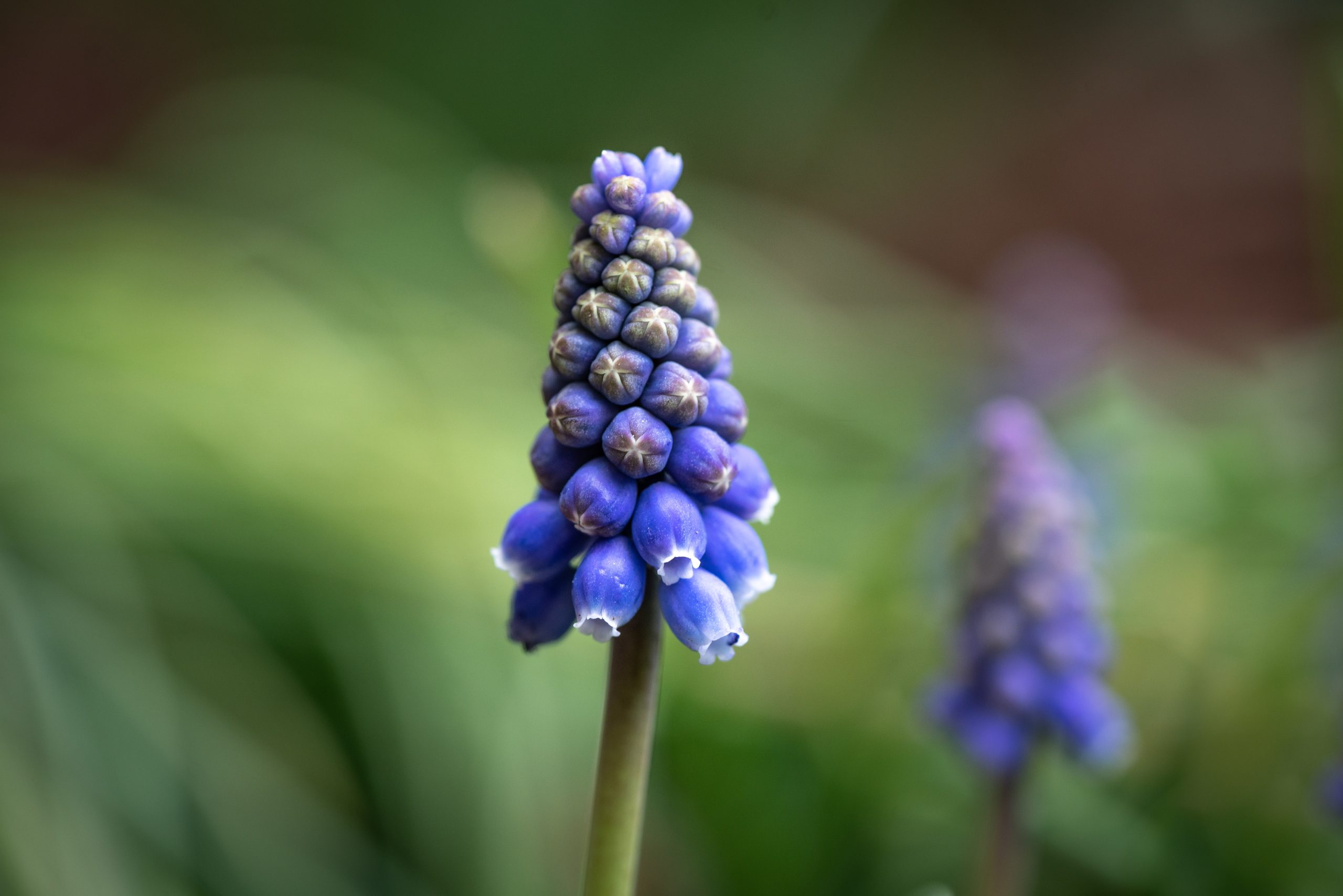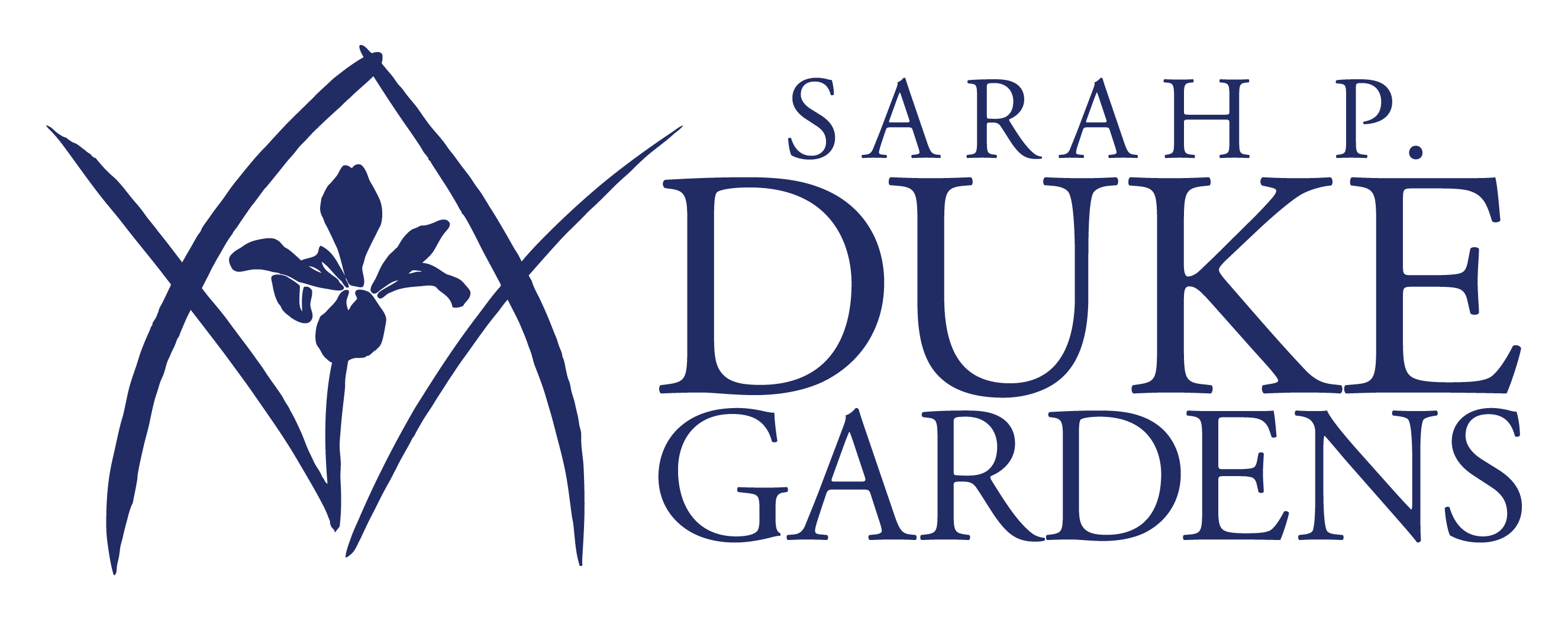
Photo by Clarence Burke.
Common name: Grape hyacinth
Family name: Asparagaceae (Asparagus family)
Native range: Mediterranean region
Location in Duke Gardens: Historic Gardens
USDA Hardiness Zones: 4-8
With clusters of tiny, round, deep blue and purple flowers, it’s obvious how grape hyacinths (Muscari spp.) got their name. The resemblance, however, is only skin-deep as these plants are highly toxic, which allows them to flourish free from predation from rabbits, deer, and other herbivores. While not true hyacinths (Hyacinthus spp.), they are close relatives and bloom at roughly the same time each year along with other beautiful spring bulbs like bluebells (Hyacinthiodes spp.) and squill (Scilla spp.).
Like other plants hailing from the greater Mediterranean region, grape hyacinths have evolved to take advantage of seasonal shifts in climate by going dormant during harsh, hot summers and emerging in early spring following winter rains. As a result, they have adapted well to the growing conditions in central North Carolina, flourishing in woodland gardens during the brief period between the return of warmer weather and the trees leafing out each year.
Although you’ll likely have to bend down to examine the flowers, grape hyacinths have a distinctive fragrance; in fact, their scientific name is derived from the Greek word for “musk.” Depending on the species and cultivar, you may see two different kinds of flowers: darker, fertile flowers that point downward, and paler, sterile flowers that point upward.
Because they are so small—topping out at six to nine inches in height—grape hyacinths are easy to overlook, which is why gardeners tend to plant them en masse for dramatic effect. They also make ideal companion plants in mixed perennial beds and borders.
Curator Mike Owens took advantage of both of these traits with the new design for the F.M. Hanes Memorial Iris Garden on the South Lawn, where hundreds of grape hyacinth bulbs were planted last fall. When mature, the result will be a simulacrum of a flowing riverbed dotted by boulders, mimicking the seasonal nature of ephemeral streams.
